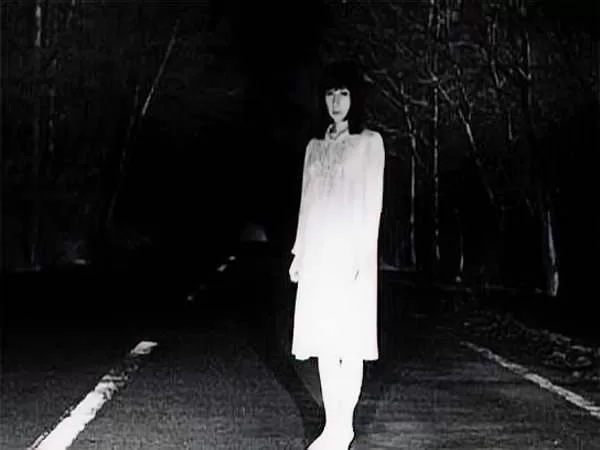The internet has an uncanny ability to breathe life into myths and legends, often making it difficult to distinguish fact from fiction. One such story that has captivated audiences worldwide is that of Teresa Fidalgo, a ghostly figure said to haunt a rural road in Portugal. But who is Teresa Fidalgo, and what is the truth behind her chilling tale?
The White Lady Phenomenon
To understand Teresa Fidalgo, it’s important to first grasp the broader concept of the “White Lady” ghost. These spectral figures are typically female apparitions linked to local legends of tragedy and loss. Often described as blurry and pale, White Ladies are commonly seen along rural roads. Their stories are found worldwide, from the United States to Europe, and they usually involve themes of betrayal, heartbreak, and untimely death.
In many cultures, a White Lady is believed to have suffered trauma or died under tragic circumstances. These ghosts are often tied to specific family lines, serving as harbingers of death. When a White Lady is seen, it is said to foreshadow the imminent death of someone in the family, similar to the Irish banshee.
Who is Teresa Fidalgo?
Teresa Fidalgo’s story gained notoriety on the internet as a chilling ghost tale. According to the legend, Teresa is the spirit of a Portuguese girl who died in a car accident in Sintra, Portugal, in 1983. The story spread rapidly through chain messages and social media, with a chilling warning that those who did not share her story would suffer misfortune or be haunted by her ghost.
However, the truth about Teresa Fidalgo is far less supernatural. Teresa Fidalgo is a fictional character created by Portuguese filmmaker David Rebordão for his short film “A Curva.” There are no official records of a woman named Teresa Fidalgo dying in a car accident in 1983. The video depicting the alleged accident was staged, with actress Sofia Reis playing the role of Teresa. The legend of Teresa Fidalgo, while widely believed, is a creation of fiction designed to thrill and entertain.
The Viral Spread of the Teresa Fidalgo Legend
The story of Teresa Fidalgo became an internet sensation, primarily due to a viral message that circulated widely. This message claimed that ignoring or failing to share Teresa’s story would result in dire consequences, including being haunted or cursed. The fear of supernatural retribution fueled the rapid spread of the tale, as people shared the story to avoid the supposed curse.
The legend also gained traction due to a supposed video recording found at the scene of the accident. According to the story, three people were driving when they mysteriously crashed. Police allegedly found a DV camera at the scene, containing a 13-14 minute recording of the events leading up to the accident. The footage was said to be so bizarre that the police destroyed it immediately.
Two years after the fictional accident, David Rebordão decided to create a short film based on the story. His film, “A Curva,” became a hit on YouTube, further cementing the legend of Teresa Fidalgo in internet folklore.
Debunking the Myth
Despite the widespread belief in Teresa Fidalgo’s ghostly presence, it’s crucial to acknowledge that the story is purely fictional. David Rebordão created the character and the film as a work of fiction. The supposed video recording, the chain messages, and the warnings of supernatural retribution are all part of an elaborate urban legend.
Rebordão’s short film and the subsequent viral spread of the story highlight the power of the internet to amplify and perpetuate myths. While the tale of Teresa Fidalgo is intriguing and spine-chilling, it is a product of creative storytelling rather than real-life events.
The Power of Urban Legends
Urban legends like Teresa Fidalgo’s story captivate our imagination and play on our deepest fears. They often involve elements of mystery, tragedy, and the supernatural, making them compelling and memorable. These stories thrive in the digital age, where they can be easily shared and spread across social media platforms.
The legend of Teresa Fidalgo serves as a reminder of the importance of skepticism and critical thinking when encountering sensational stories online. While it can be fun to indulge in spooky tales and ghost stories, it’s essential to distinguish between fact and fiction.
Conclusion
The story of Teresa Fidalgo is a modern urban legend that has captivated and terrified internet users worldwide. While the tale of a ghostly figure haunting a rural road in Portugal is compelling, it is ultimately a work of fiction created by filmmaker David Rebordão. Understanding the origins and debunking the myth of Teresa Fidalgo underscores the power of storytelling and the internet’s role in perpetuating urban legends.
So, next time you come across a chilling ghost story online, remember to approach it with a healthy dose of skepticism. Enjoy the tale for what it is—a captivating piece of fiction designed to entertain and thrill.

